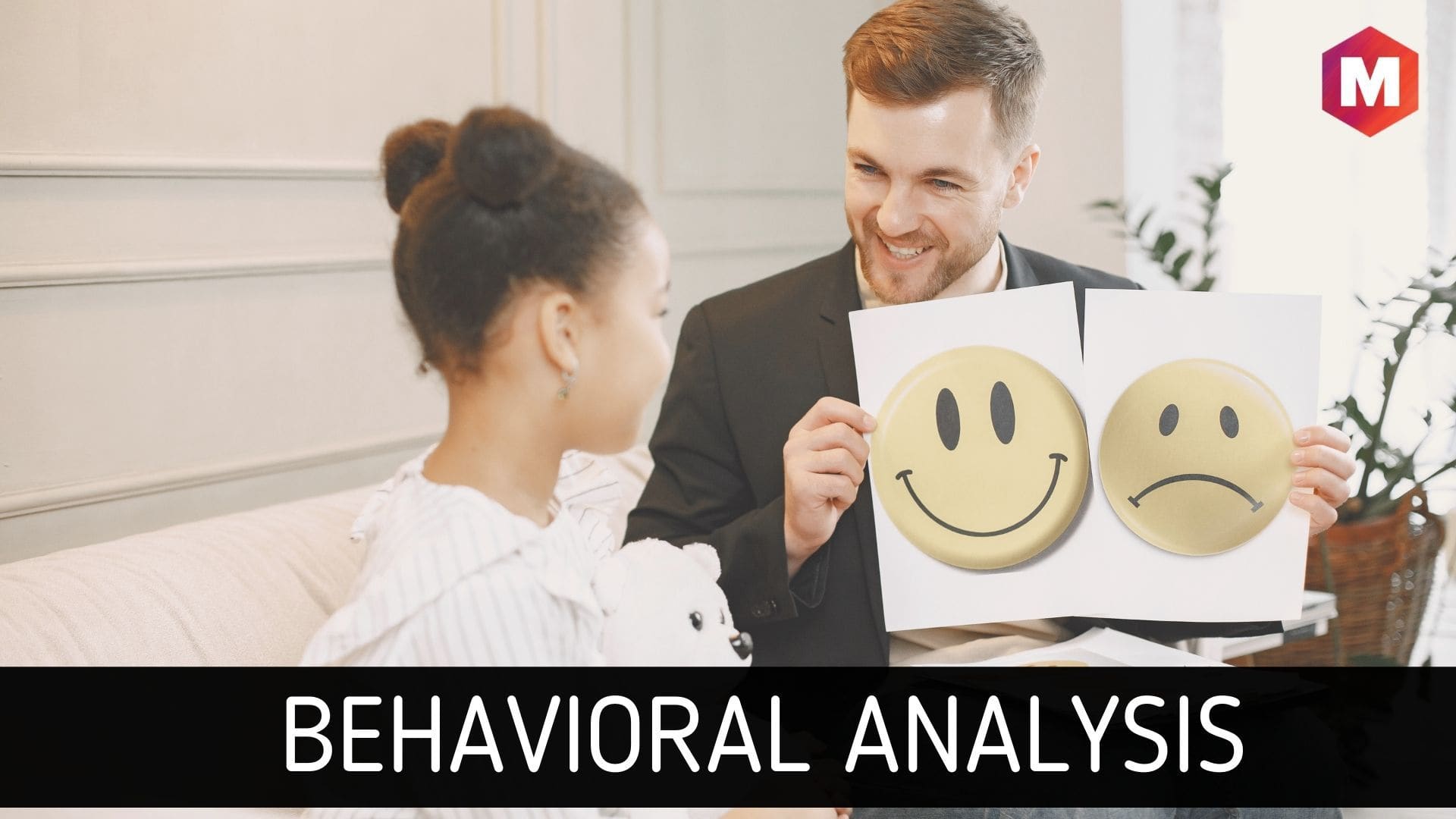
What is Behavioral Analysis? - Definition and Techniques | Marketing91
What is Behavioral Analysis? – Definition and Techniques
July 10, 2021 By Hitesh Bhasin Tagged With: Finance
Table of Contents
What is Behavior Analysis?
Definition: Behavioral Analysis is defined as a scientific study of human behavior by using foundations and principles of behaviorism. Behavior analysts are well adept at analyzing, understanding, and predicting human behaviors.
Behavior analysis is an analysis technique or a part of natural science that aims to understand the behavior of people. Behavior Analysis is observing and assessing the root and outcome of one’s behavior, identifying the problematic parts, and modifying these behaviors and surroundings. This analysis is built on the philosophies and fundamentals of Behaviorism.
The process of behavior analysis revolves around the study of pharmacological, biological, and experiential factors in their ways of influencing human behaviors.
Behavior analysis is benefitted in mental health healing, treatment for people with weaknesses, and other types of structural psychology. To understand behavior analysis, a person needs first to know what behavior is.
Behavior is what a person does that can be watched, assessed, and imitated. Behavior denotes their acts, not their intention or aims for the act. Behavior can be impacted due to several factors like stress, pressure, and many more. Numerous aspects impact, encourage or restrain behaviors in both kids and adults. Some of these comprise the surroundings, daily habits, and predictable results.
Understanding Behavior Analysis
Behavior Analysis is the systematic learning of the ideologies of knowledge and one’s behavior. This subject of knowledge is related to illustrating, identifying, expecting, and inconsistent behavior. This field tries to find remedies by observing the biotic and environmental aspects, though they are mainly concerned with surroundings in behavior transformation.
In Behavior Analysis, there are three significant departments to the discipline: Conceptual Behavior Analysis, Experimental Behavior Analysis, and Applied Behavior Analysis.
The Conceptual division stresses the logical, hypothetical, historical, and systematic areas that inspire the discipline. Experimental Behavior Analysis includes an elementary study proposed to increase knowledge about facts that determine and impact behavior.
Applied Behavior Analysis is dedicated to using the values of behavior for the requirements of people to encourage behavior change and enrich the quality of their lives.
What is Applied Behavior Analysis (ABA)?
The behavior analysis applied is an empirically validated or evidence-based approach used for teaching the behavioral principles, strategies, and laws. It is used for teaching adults, adolescents, and children with Autism Spectrum Disorders ASD, and other developmental, learning, and intellectual disabilities.
The analysis of applied behavior is also used in teaching children and adults with behavioral disorders or challenges, mental health disorders, and speech impairment.
Techniques Used in Behavior Analysis
Some of the techniques that are used in the behavioral analysis are
1. Prompting and Fading
This process includes using some form of provocation to activate the wanted response. This may involve questioning the person what to do or displaying an image considered to a person to get their reaction.
Prompts are pictorial or vocal signs to help optimize a person’s behavior. Verbal signals are clear provocations. Visual signals are a little less straight to the activity and might be stated as an indication or an appearance of a person’s eyes. The child will watch this signal and be provocative to perform modestly.
2. Positive Strengthening or Reinforcement
Individuals at times come across difficulties and do not know how to react in certain situations. It is crucial to support and acknowledge them when they do something correctly. An optimistic approach to situations always turns out to be beneficial.
Reacting positively to the behavior of the people will encourage them to do the performances they are being acknowledged and supported for. This is considered to be a possible way every individual reacts. Positive reinforcement is an advantageous way to build confidence in a person. S
elf-confidence plays a vital role as it affects the person’s behavior at a point. Positive reinforcement helps analyze a person’s behavior.
3. Chaining
This behavioral analysis method comprises breaking down an assignment into minor sections. The easiest or the primary duty in the procedure is explained initially.
As soon as the work has been studied, the next step can be explained to the individual. This carries on up until the whole classification is effectively completed simultaneously.
This technique helps individuals learn how to carry out their work without feeling burdened with the load. Instead, they can divide the work and then work on it. This would help them finish the work quickly and efficiently. This is also an optimistic approach to help change an individual’s behavior.
4. Negative Reinforcement
Some of the times, when children are not acting in the right manner, it is important that such sorts of behavioral tendencies are corrected straight away.
In such situations, punishing the children in a way that they know why they are being punished is important. Here, punishment should be dedicated to constructively empowering the children.
5. Task Analysis
This type of behavioral analysis is used to learn about any child instead of reinforcing or correcting a child’s behavior. The teacher is supposed to analyze the child while performing a task. Different categories used in such an analysis are- Physical actions, Cognitive actions, Allocation, Repetition, Environment, etc.
After performing the analysis, the teacher can alleviate the tasks for the child as per the analysis report.
6. Generalization
By using this technique of behavioral analysis, teachers are supposed to find out the key things that children have learned in one setting and then they apply the same things in other settings with the same children.
So, the output of one session with a child is used in other settings to ease down the process of learning and make it more personalized.
What is a Board Certified Behavior Analyst (BCBA)?
The Behavior Analyst Certification Board BACB offers the certifications to the Board Certified Behavior Analysts which are considered as Master’s degree or Doctorate Level professional.
These professionals have specifically studied the Science of Applied Behavior Analysis (ABA) by fulfilling specific coursework requirements along with completing a supervised experience in a fieldwork setting engaging in Behavior Analytic activities.
They have also passed a national certification exam in Behavior Analysis.
Wrap Up!
Behavior analysis helps in identifying a person’s behavior and assisting them as an effective learning tool. The goal is to eliminate the unwanted characteristics in one’s behavior and build positive characteristics and social skills.
A person’s behavior is influenced by so many factors that, at times, people do not even understand that their behavior is changed until someone informs them about it. Severe behavioral problems can be treated through Behavior Analysis methods.
Behavioral therapy is highly motivational and activity-based. It is essential to understand that surroundings and reliability influence behavior. Persons must be surrounded by a positive atmosphere.









